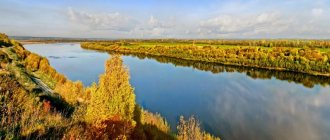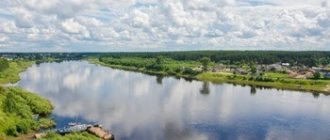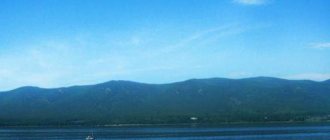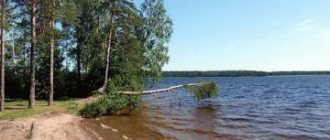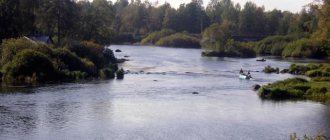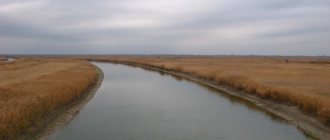Mountain ranges and hills
The main feature of the natural part of the region is that its main area is represented by forests and plains. Closer to the east is the Verkhne-Kama Upland, the height of which reaches 400 meters and stretches along the Ural mountains. It is presented in the form of densely populated ridges and hills. The Vyatka River originates from it. Vyatsky Uval, another mountain range that runs through the center of the region, its height starts from 150 meters and reaches 300 meters. Closer to the north of the region is the Northern ridge. Its maximum height reaches 290 meters. There are two famous caves in the region: Kirov and Paradnaya.
Nedminskie rocks are another natural pride of the region. They are located on the border with Mari El near the Nemdy River. Nearby is the protected natural area “Pizhemsky”. Berestyansky waterfall is one of the famous attractions of the Kirov region. In winter, the water, frozen over its entire height, shimmers from the rays of the sun.
↑ Cities
On the banks of the river there are a large number of cities and towns, most of which are part of the Kirov region. Among the major cities the following stand out:
- Kirov;
- Kotelnich;
- Sovetsk;
- Vyatskiye Polyany;
- Slobodskaya.
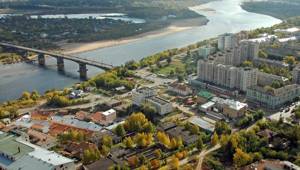
Vyatka river Kirov photo
On several tributaries there are cities called Nolinsk, Urzhum, Kirs. They are located near the places where the reservoirs flow into the Vyatka.
Geography and climate
The area of the area, which is about 600 meters, allows you to see and appreciate the diversity of lowland landscape species: a large number of different forests, a variety of fir plants, various rivers and lakes. A large number of rivers and lakes will delight any fishing enthusiast with fishing and catch. In addition to a significant number of trees and plants, the region is also rich in northern landscapes and deposits of natural resources such as oil, peat, phosphates and forests.
The region has generous reserves of fresh water, mineral springs, and natural healing mud. The nature of the Kirov region boasts on its territory: sheer cliffs, rocks, waterfalls, underground caves. The climate here is temperate continental. The region is quite cold due to the frequent movement of polar air masses. This phenomenon leads to the fact that in winter it is quite cold here and sharp and severe frosts prevail, and in summer during the warm period there can be a sharp change in temperature from warm to cold.
The summer period is short and passes quickly, while winter lasts a long time and is accompanied by heavy snow. In spring the air temperature is +17°. In April the snow cover melts and by the end of the month not a trace of snow remains. Summer begins in June and lasts until the beginning of September; the average temperature at this time of year is +25°. Depending on the year, summer can be hot and dry, the thermometer can rise to +40°. The first frosts begin at the end of October, already in January the temperature drops to -20°, heavy snow falls, and winter lasts about four months. February is considered rainy and by the beginning of March the temperature begins to rise.
↑ Tourism on the Vyatka River
Vyatka is great for fishing, tourism, family and individual recreation. Recreation centers, sanatoriums and boarding houses have been built along the coast, where residents of the Kirov region come to take a walk along the picturesque banks, raft the river, go fishing, and visit the reserve, which is located on the right bank of the Vyatka.
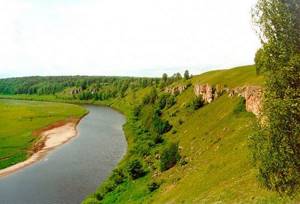
Vyatka river photo
But, first of all, the river is valued among fishing enthusiasts. You can do this at any time of the year, but the best time is summer, when the water is warm and heated by the sun's rays. Therefore, fishermen take their family members with them. During this season, the fish are located close to the shores, but in autumn and spring they move far from the coastal zone. Therefore, fishermen go on boats far from the shore, using spinning rods. Many people fish in oxbow lakes. Winter is the best time to catch burbot. Although it is difficult to get to the fishing spots due to the fact that there is ice.
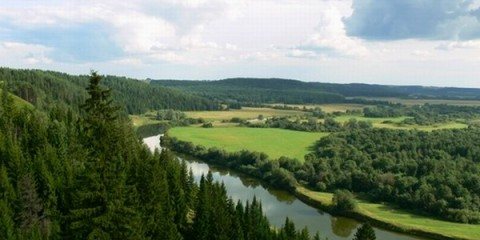
Nurgush reserve photo
On the right bank of the river there is the Nurgush nature reserve, on the territory of which rivers and many lakes flow. A large number of animals, plants, fish, and reptiles are found in forests. Visitors can visit the reserve by walking along specially laid ecological trails. During excursions you can get acquainted with the sights of nature and see protected animals. In addition, tourists are taught to create a life in nature so as not to cause damage to nature.
Rivers and lakes
The total number of rivers in the region includes more than 1980 reservoirs, the total length of which is about 70 thousand km. All of them are fed from sources that are located both on the surface and inside the soil. They flow smoothly and calmly. The most important river in the region is called Vyatka. Its length is more than 1500 meters. The river can be classified as a typical body of water with considerable tortuosity.
It flows through a valley, is surrounded by rocks and has typical changes in flow direction. In mid-November the river begins to freeze and by the end of the month it is completely covered with ice. The reservoir is rich in waterfowl and various species of fish. Along the banks of the river there are populations and regions: Slobodskaya, Kirovo-Chepetskaya, Kirov, Orlov. One of the most mysterious lakes in the region is Lezhinskoye, which was formed more than 400 years ago.

It appeared as a result of the collapse of deep cavities. The shore of the lake is surrounded by forests, thanks to them the wind does not get here. The depth is about 40 meters and the diameter of the lake is 390 meters. In addition to extensive underwater vegetation, the lake is home to various types of crayfish, pike, and roach. In the Kirov region there is another local reservoir, Shaitan.
If the name is translated from the Tatar language, it means “devil”. Shaitan is located on the border with the Republic of Mari El. Its depth is 20 meters. This lake has a peculiarity: as a result of siphon circulation in the current, a fountain occurs, which reaches a height of 12 meters. This phenomenon is very difficult to capture or film, as it occurs unexpectedly.
What is interesting about fishing in the Kirov region?
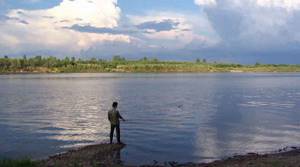
Fishing in general is an unforgettable event that brings a lot of positive emotions, and fishing in the Kirov region is no exception. There are no limits on catch volumes, but you should always fish with knowledge of the law, and it says that large specimens of rare fish should be released.
In the Vyatka River, fish can be caught using any gear. For example:
- fly fishing;
- spinning fishing;
- fly fishing.
Fishing on this river is not always effective due to frequent weather changes. In such conditions, the fish hides in deep holes, each time waiting out bad weather.
Reviews from fishermen
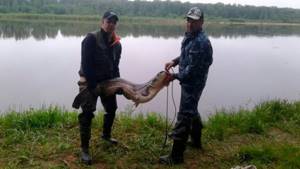
The total number of reviews on fishing in the Kirov region is positive. Most fishermen managed to find promising places and were left with a catch. This applies to both experienced fishermen and novice fishermen.
It makes sense to read some reviews from anglers who spent time on reservoirs in the Kirov region:
- “During the process of fishing with a spinning rod in the upper reaches of the Maloma River, I got the impression that there were no fish in the river at all, but towards the evening a crazy bite began, which was simply delightful.”
- “As a local fisherman, I have been fishing here since childhood, when my father taught me his craft. There is enough fish in the reservoirs, so there is enough for my children, whom I help find fishing spots and teach the intricacies of fishing.”
- “Coming to paid reservoirs you get a lot of pleasure. The most important thing is that we managed to catch trout.”
Paid fishing

This type of fishing appeared quite recently and is developing very intensively in our time. There are several fish farms known today that practice paid fishing:
- “Cordon Donuarovo” is located in the Kilmez district. It represents an entire recreation center with built houses, where all amenities are available, along with three meals a day and other opportunities. You can catch fish here in any part of the reservoir. Fishing per day will cost one and a half thousand rubles per person.
- Sosnovy village. Some local ponds breed carp and allow anglers to catch fish for 70 rubles a day, which is quite cheap. As for other services, you will have to pay for them separately.
- Fishing in the village of Klyukovo. Here they breed trout. Within the pond there is a house where you can spend the night. Large fish are caught here, and the low cost (only 100 rubles) attracts many anglers, especially since trout is caught here.
- In the direction of Strizhi, turning towards Doronichy, you can get to paid reservoirs created artificially. For 50 rubles a day you can catch any fish here.
- Sanatorium "Vyatskie Uvaly". There is a beautiful koi pond here. For one kilogram of caught fish you will have to pay 35 rubles. There is a lot of fish here, and the price is attractive.
- Isakovsky ponds. Fish such as perch, pike, and carp are found here, so this place is very popular both for local fishermen and for visiting fishing enthusiasts. Fishing prices may vary and you can only find out about them by arriving at the reservoir.
Fishing as a savage
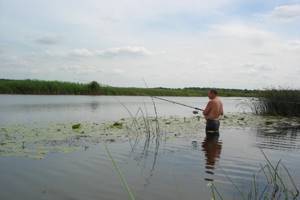
People who do not welcome paid fishing in the Kirov region have enough space to go fishing without comfortable conditions. On the Vyatka River, where there is a sufficient variety of fish, you can fish all year round. The river has gentle banks, so normal access is provided here. Despite the fact that there are a large number of villages along the banks of the river, the fish population is increasing. This is due to the fact that residents have left the villages and there is no one to fish. Therefore, you can always count on a serious catch here.
In summer, you can relax here with the whole family. There are beautiful beaches along the banks of Vyatka, and normal access can provide comfortable recreational conditions.
There are all conditions for fishing here. There are many deep areas and areas with sloughs where fish prefer to be. The main catch consists of white fish, which is caught on a regular float rod using standard bait.
Since few people fish here, the fish are not afraid of humans and come close to the shore. Therefore, the use of non-standard gear is not advisable at all.
The soil
There are three zonal types of soils in the region: podzolic, soddy-podzolic, forest soils. Now about each in order.
Podzolic soil is quite poor in the presence of natural nutrients. It is formed mainly under forests and coniferous plants. If you dig a hole, it can be easily recognized by the following signs: at the top there is forest litter, then there is a compacted layer, which is slightly red in color, and then the parent rock. This species can be observed in the villages of Darovsky, Peskovka and in the village of Biserovo.
Soddy-podzolic soils also extend mainly under forest cover. It can be recognized by its grassy ground cover. It is divided into: strongly podzolic, medium podzolic, weakly podzolic. The first two are characterized by low soil fertility. They do not contain a large amount of natural and mineral substances that have a bad effect on vegetation. They contain little humus, salts, phosphorus and potassium, the total component in the soil is no more than 2%. But they contain more phosphorus and potassium than other types of soil. According to their geographical location, soddy-podzolic soils are formed from the village of Sanchursa and are located to the city of Sovetsk; strongly podzolic soils are located to the north, medium podzolic soils are closer to the central part, and weakly podzolic soils are located to the south.
Gray forests form the southernmost part of the soil. It is located and runs down the banks of the Vyatka River. The soil was formed under broad-leaved forests. The forest species differs significantly from all others in its greater fertility. The humus reaches 35-45 cm thick. Forest soil does not need lime, but is capricious and requires constant mineral fertilizers.
Kirov
Video: Kirov from above
Basic moments
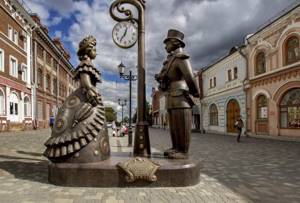
Kirov was founded in the 12th century by Novgorodians, and according to one legend, like the Russian capital, it stands on seven hills. The city was called Khlynov, then Vyatka, and received its modern name in 1934. Nowadays, Kirov has the status of a regional center, where 496,986 people live (2016).
Kirov is located in the taiga zone. This is a very green city, which has its own Botanical Garden, Arboretum of Foresters, as well as public gardens and parks. The Kirov embankment is very beautiful, named after the writer Alexander Green, who was born here. Guests of Kirov, if desired, can look into local museums and churches, stroll through the historical center of the city or the picturesque Alexander Garden - the oldest park in Kirov, laid out on the river bank.
Most of the city occupies the elevated left bank of the Vyatka. This river was once famous for its purity and depth. However, over time it became very shallow, and today in some places the Vyatka is not difficult to ford. River ecology also leaves much to be desired. Due to discharges from the Kirovo-Chepetsk chemical plant and other enterprises, the water in the river is heavily polluted. Swimming is not recommended here, and local residents choose other bodies of water for fishing.
Many hotels and mini-hotels have been built in the city to accommodate tourists. More budget options are provided by Kirov guest houses, recreation centers and hostels.
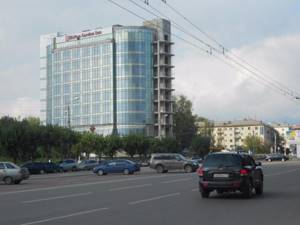
History of Kirov
The first settlements on the site of the current city appeared about 2.5 thousand years ago, and the ancestors of the Komi and Udmurts lived on these lands. In 1181, Novgorodians came to the banks of the Vyatka and began to build a city here.
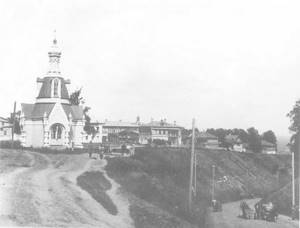
View of the chapel near the Razderikhinsky ravine of the early 20th century
In 1412, the Vyatka residents entered into a military confrontation with the Ustyugans. The battle took place at night in a deep ravine, which later received the name Razderikhinsky. The causes of the military conflict, later called the “Khlynovo massacre,” have not been preserved by history. There is a version that the Ustyug residents, together with the Moscow princes, wanted to subjugate the city. In memory of those who died, the St. Michael's Chapel was erected on the slope of the ravine and the original holiday "Whistle Dance" or "Vyatka Whistling" began to be celebrated.
In the middle of the 15th century, the troops of the Moscow prince made several military campaigns against the city, after which power in Khlynov began to belong to Moscow, but self-government was preserved in the city. The complete subordination of Khlynov occurred in 1489, when all local authorities were forcibly relocated to the Moscow region, and the Moscow governor began to rule in Vyatka.
In 1710, the territory of Russia was first divided into provinces, and Khlynov became part of the Siberian province. A separate Vyatka province was formed in 1780 by decree of Tsarina Catherine II. At the same time, Khlynov received a new name and began to be called Vyatka.
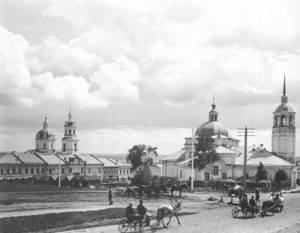
After the October Revolution of 1917, the Vyatka authorities did not want to reckon with the Bolsheviks and proclaimed a separate republic. In January 1919, F. E. Dzerzhinsky and I. V. Stalin came here to check. It turned out that the city is in no way connected with the Moscow government, and the overwhelming number of officials have been working since tsarist times. After inspection, a military revolutionary committee was created in the city.
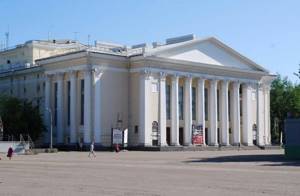
Kirov Drama Theater
In 1929, after the liquidation of the provinces, Vyatka became a regional center. Five years later, the first public transport appeared on the city streets - three buses began running in Vyatka. At the end of 1934, in memory of the revolutionary, statesman and political figure who was killed in an assassination attempt by S. M. Kirov, the city was renamed in his honor.
During the Great Patriotic War, machine-building plants and scientific institutes evacuated from the western regions of the country operated here. In 1943, the first trolleybuses went into service in Kirov. When the war ended, most of the enterprises were left in the city, and they became the basis for the development of local industry.
In 1962, the first bridge was built in Kirov, connecting the banks of the Vyatka. During the years of Soviet power, the city was closed to foreigners for a long time. The reason for this was the presence of several defense enterprises and the First Military Biological Institute.
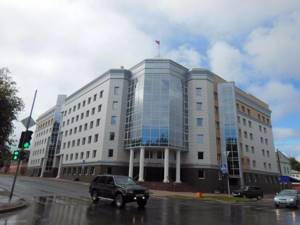
Regional Court of the Kirov Region
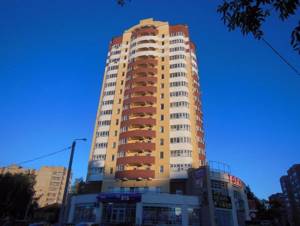
Sixteen-story building on Blucher Street

Rotunda in the Alexander Garden
Museums of Kirov
It is not surprising that in Kirov, with its centuries-old history and traditions, there are several museums. The Vyatka Museum of Local Lore is one of the oldest in the country. It appeared in 1866. The exhibits collected here tell about the history, culture, ethnography and nature of the Vyatka lands, local artistic crafts, as well as the life and work of writers A. S. Green and M. E. Saltykov-Shchedrin.
The most ancient history of the region is kept in the city paleontological museum (Spasskaya St., 22), the main wealth of which is the collection of fossils from the Permian period. These are the remains of animals that lived in the Vyatka region about 260 million years ago. They were brought from excavation sites of ancient lizards, which are located 100 km from Kirov, in the valley of the Vyatka River.
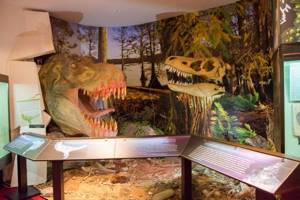
The Vyatka Art Museum is named after the famous Russian painters Viktor and Appolinary Vasnetsov. Over more than a century of history, the museum has collected rich collections of works of ancient Russian and ecclesiastical art, painting, graphics, sculpture, Western European arts and crafts and Russian folk crafts. A separate memorial museum is dedicated to the work of the Vyatka artist Nikolai Khokhryakov (1857-1928).

Vyatka Art Museum
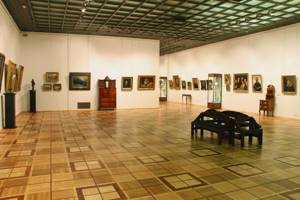
In a beautiful merchant mansion, on the street. Moskovskaya, 12A, guests are received by the unusual Vyatka Kunstkamera. In its five halls, items from the urban life of Vyatka from the late 19th to early 20th centuries are exhibited: collections of porcelain, furniture, watches, musical instruments and clothing.

Vyatka Kunstkamera

More modern exhibitions are presented in the Kirov Museum of Aviation and Cosmonautics (Preobrazhenskaya St., 16). In Russia there are only four museums dedicated to K. E. Tsiolkovsky, and the one located in Kirov is one of them. Many memorial items of the scientist associated with the Vyatka period of his life are exhibited here.

Museum of K.E. Tsiolkovsky, aviation and astronautics
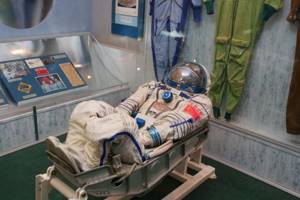
Museum of K.E. Tsiolkovsky, aviation and astronautics

Museum of K.E. Tsiolkovsky, aviation and astronautics
Guests of Kirov should also check out the local planetarium and the Kirov diorama. Interesting rotating exhibitions are held throughout the year in the Exhibition Hall (Karl Liebknecht St., 71).
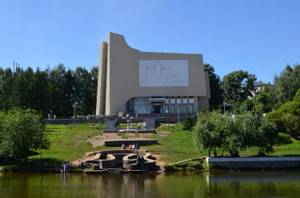
Kirov diorama
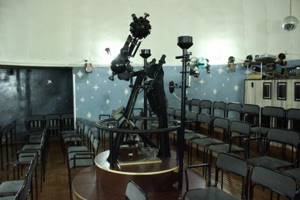
Kirov Planetarium
Orthodox shrines of the city
From the picturesque Green embankment, you can take a convenient descent to the Holy Dormition Trifonov Monastery (Gorbachev St., 4). This place is revered not only by Kirov residents, but throughout Central Russia. The monastery was founded in 1580, and for the first hundred years it was made of wood.
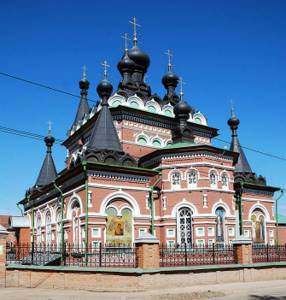
Cathedral of Seraphim of Sarov
The temples, cells, abbot's chambers and towers that can be seen today were built in the 17th-18th centuries. They are perfectly preserved and have the status of federal-level architectural monuments.
The architectural ensemble of the monastery attracts not only believers; many lovers of Russian architecture come here. The main monastery church, the six-domed Cathedral of the Assumption of the Virgin Mary, houses the relics of St. Tryphon of Vyatka. Inside the St. Nicholas Gate Church you can see a beautiful iconostasis, as well as wall and ceiling paintings. The high bell tower of the monastery was built in the 18th century, destroyed under Soviet rule and restored in the 1990s.
Other churches built in the 17th – early 20th centuries have also been preserved in Kirov: the Spassky Cathedral and the Cathedral of St. Seraphim of Sarov, the Church of the Sign and the Church of John the Baptist.
"Vyatka Whistle"
“Whistle Dance” or “Vyatka Whistling” is dedicated to the memory of all those killed during the famous “Khlynovo massacre” of 1412. It is believed that this holiday appeared in Kirov about 400 years ago, but the first documented information about it dates back only to the 19th century. The name of the holiday gave rise to one of the nicknames of the residents of the Vyatka region, who were called “whistlers”.
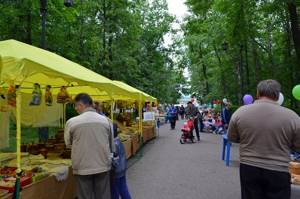
“Whistling” was celebrated on the fourth Saturday after Easter. Traditionally, it began with a memorial service for the dead, which was held in the St. Michael's Chapel near the Razderikhinsky ravine. Then sadness gave way to joy. Celebrations and fairs were held in city neighborhoods, people sang songs and whistled whistles, and fist fights were held for the amusement of the public.
The last “Whistle” took place in the 20s of the last century. Then they forgot about the holiday for several decades. Now elements of the “Vyatka Whistle” are reproduced when Kirov residents celebrate City Day.
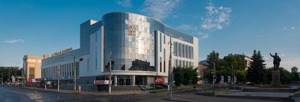
Vyatka-TSUM
Dymkovo toy

One of the most popular folk crafts - making toys from clay - arose about 400 years ago on the right bank of the Vyatka, in the settlement of Dymkovo across the river, the territory of which has now become part of the city quarters. Mostly women were involved in modeling, and domestic animals and birds became the prototypes of clay products. It is believed that local residents began to make the very first toys and whistles for the spring festival “Whiplash”. Crafts were sold at the city fair, and they were happily bought for children.
The Dymkovo toy has long become one of the recognizable brands of Kirov and the Vyatka region. The products are still sculpted by hand. From kneading clay to painting, this is the work of a specific master, so toys are almost never repeated. To make them, they use Vyatka red clay mixed with brown river sand. The figures are sculpted in parts and then assembled into a single whole. The individual parts are held together with liquid clay. Then the toys are dried, fired in ovens and painted. Previously, bright tempera paints were used for this purpose, for mixing which eggs and kvass were used. Today, technology has changed, and toys are painted with acrylic paints.
A few years ago, a sculptural group made according to the canons of Dymkovo toys appeared in the center of Kirov. It consists of the figures of a man with an accordion, a lady holding a baby, as well as a child with a whistle, a cat and a dog.
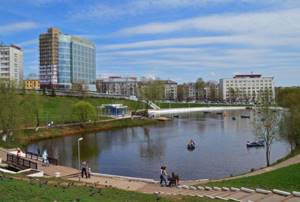
Pond in the park named after. Kirov
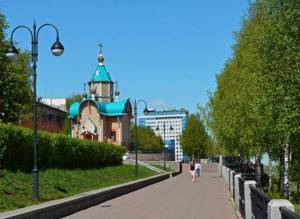
Souvenirs
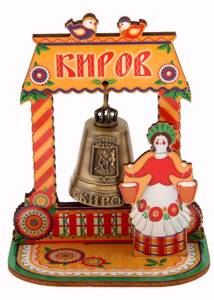
To remember their visit to Kirov, many travelers buy a Dymkovo toy. This is not only a nice gift for children, but also a beautiful decoration for any home. Dymkovo toys are sold in any souvenir shop in the city. They also sell Vyatka nesting dolls, which are distinguished by high quality painting and inlay with gold straws.
To make a good gift for children, you can bring toys from Kirov that are made at the Vesna factory. They produce a lot of dolls, soft toys, festive costumes, board games and a variety of sports equipment. These products are sold in shops and toy departments and in the factory store.
Another popular Kirov souvenir is the products of local lacemakers. Kukar lace, as a type of folk craft, appeared at the beginning of the 18th century. It is plaited using bobbins. The lace of local craftswomen is distinguished by its lightness, variety of patterns and decorative expressiveness. In Kirov you can buy elegant lace vests, openwork collars, cuffs, tablecloths and napkins.
The city factory “March 8” produces beautiful embroidered products - aprons, kitchen sets, tablecloths and bags. You can buy Vyatka embroidery in the company store opened at the factory.

Kukar lace
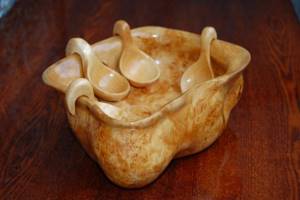
Vase for honey made from burl root
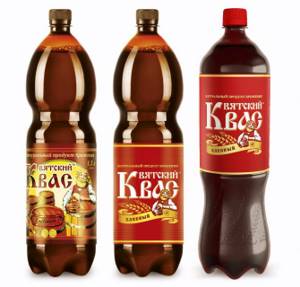
Vyatka kvass
Burl carving has been another local craft for a long time. Burl root is an interesting natural formation. The growth on a tree trunk consists of intertwined fibers, and therefore products made from it always look very original. Carved wooden souvenirs - boxes, caskets, snuff boxes, smoking pipes, photo frames, desktop stationery and interior decorations are many perfect gifts for family and friends.
Among the “edible souvenirs,” Vyatka kvass, Kirov mushrooms, especially jars of salted saffron milk caps, sweet liqueurs from the Urzhum distillery and, of course, the “Flight” cake are in great demand. His recipe was invented in Kirov, and delicious cakes are still produced in the city.
Hotel deals
Booking.com
Transport
Within Kirov, the road network stretches for 562 km. To move around the city, Kirov residents and tourists use buses, trolleybuses and minibuses. For about a year and a half, Kirov has had a system of transport cards that give the right to discounted travel. You can get from Kirov to the nearest settlements by buses and commuter trains.
How to get there
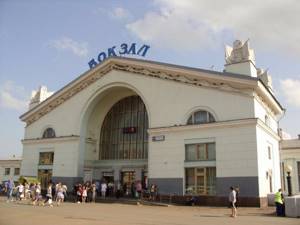
The federal highway A119 “Vyatka” runs near Kirov, so it’s easy to come to the city by car.
Kirov is connected by rail to Moscow, St. Petersburg, Nizhny Novgorod, Vologda, Kotlas and Perm.
The nearest airport “Pobedilovo” is located 22 km from the city limits. You can fly here on regular flights from Moscow, St. Petersburg, Nizhny Novgorod, Perm, Ufa, Anapa, Sochi, Simferopol, Kazan, Samara, Kotlas, Arkhangelsk, Usinsk, Vorkuta and Naryan-Mar. The flight from Moscow to Kirov lasts 2.10 hours. From the airport to the city it takes 40-50 minutes to get by taxi or bus No. 116.
Calendar of low prices for air tickets
Reserves
The Kirov region has about 200 protected sites on its territory. The most important reserves in the region: Nurgush, Bylina, Pizhemsky and about 12 reserves.
Nurgush protects about 60 rivers and 7 lakes. Located in Kotelnichesky district. There are also about 600 species of flora, and in the forest part there are representatives of fauna: 50 mammals, 200 birds, 40 fish. The attraction of the reserve is the white-tailed eagle, access to which is not permitted by law.
Pizhemsky is located near the Nemda River. The reserve protects about 150 different species of plants and trees.
Bylina is under state control. Almost all forests and lakes are under his control. You can also see some species of geese and cranes here.
Geographical information
The source of the river is on the slopes of the Verkhnekamsk Upland in Udmurtia. The river flows into the Kama 17 km downstream from the town of Mamadysh. The length of the river is 1314 km, the area of its drainage basin is 129,000 km².
Width of the low-water river bed The Vyatka River grows from 40-50 m in the upper reaches to 200-450 m in the lower and middle reaches.
The Vyatka, as a typical lowland river, has a smooth longitudinal profile, relatively small slopes and low flow speed. The depth of the river in summer in the upper reaches varies from 3-5 m on the reaches to 0.3 m on the rifts, and below the city of Kirov - from 7-10 to 0.55 m, respectively.
Vyatka is characterized by sharp changes in the direction of the current (from north to southwest, and then to the southeast) and great tortuosity along its entire length. The Vyatka flows mostly in a wide valley with gentle slopes. In the lower reaches, widened and narrowed sections of the valley alternate every 1-5 km. Lots of rolls.
Food mainly comes from snow. Average annual water flow 890 m³/sec. It freezes in the first half of November and opens in the second half of April.
The largest tributaries: on the right - Belaya, Kobra, Letka, Velikaya, Moloma, Pizhma, Shoshma, Urzhumka; on the left - Belaya Kholunitsa, Cheptsa, Bystritsa, Voya, Kilmez.
The Vyatka is the main river of the Kirov region; most of the cities in this region are located on its banks: Slobodskaya, Kirovo-Chepetsk, Kirov, Orlov, Kotelnich, Sovetsk, Vyatskie Polyany, Sosnovka. On small rivers, a few kilometers from their confluence with Vyatka, are the cities of Omutninsk, Kirs, Nolinsk, Urzhum, Malmyzh.
Plants
Natural vegetation in the Kirov region is very diverse. This mainly happens because more than 55% of the total area is occupied by coniferous and forested plateaus. Which consist of: pines, fir, spruce, aspen, birch, oak, linden and maple. In the southern part of the region you can see a large number of bush plants, such as rowan, rose hips, juniper, lilac. In total, there are about 50 different species of shrubs and trees in the region.
In the forested steppes you can see various berry plants: blueberries, currants. Lingonberries, blueberries. In the southern part of the region you can find trees on which nuts grow. The region's vegetation includes 900 different species of flowers and herbs, some of which are listed in the Red Book. Such representatives of the flora include: nettle-leaved speedwell, pea-shaped vetch, Gmelin's rank, cut incense, reed horsetail, medicinal valerian, Siberian iris and many others.

While walking through the forests, you should pay attention to the large number of different types of mushrooms, these include: porcini mushrooms, aspen mushrooms, saffron milk caps and others. Numerous types of grasses grow near rivers, including: field fescue, foxtail, white bentgrass, awnless brome, and creeping wheatgrass. In the reserves there are plants that are under strict protection, including: tree-like junipers, Siberian scribe, helmeted orchis, wood anemone, clubmoss, European swimmer, water lily.
Relief of the Vyatka delta
The Vyatka basin is almost perfectly proportional and symmetrical. The area of the left bank part is more than 61 thousand square kilometers, the right bank part is about 68 thousand. In the north, the territory borders on the Northern Dvina River basin, and on the west, east and southeast - on the Volga basin, into which the Vyatka River flows. There are many swamps in the upper reaches of the waterway, since the terrain is flat and groundwater lies close. Numerous forests grow in this part of the river - up to 90% of the territory. Further in the lower reaches of the Vyatka, forest cover is reduced to 40%. In the upper reaches, the width of the river valley extends for 5 kilometers. Downstream near the village of Melyanda, where it is limited by high flood-free banks, it narrows to 750 meters. Below the Atar Bend, the river widens again to 5 kilometers. The Vyatka floodplain is mostly swampy and covered with vegetation. Basically, these are meadows with many lakes.
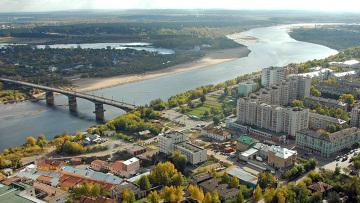
Animal world
Most species of animals, as well as plants, here are largely representative of the taiga. In total, their number is 55 mammals, 12 amphibians, 240 birds. The forest is inhabited by: moose, squirrels, ferrets, hares, bears, foxes, lynxes, wolves, wolverines, stoats, badgers. The most popular types of birds that can often be found are black grouse, cuckoos, woodpeckers, wood grouse.
Lesser-known species that also live in the region: eagle owl, gray crane, heron. The following types of fish are frequent guests in local reservoirs: pike, pike perch, sterlet and many others. About 20 species of animals are listed in the Red Book and live in special reserves and are protected. These include: eagle owls, golden eagles, Russian muskrat, reindeer, forest dormouse, European grayling and others.
